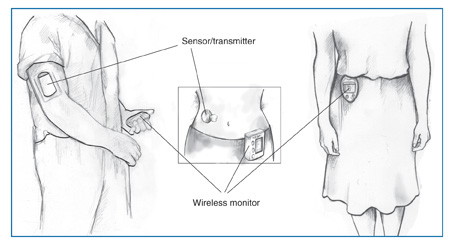October 2006: Three studies presented at the 71st Annual Scientific Meeting of the American College of Gastroenterology demonstrated that transoral endoscopic surgical techniques � entering the abdomen through oral cavities such as the nose and mouth � can be successful in both bovine and human patients. Further, patients who underwent endoscopic-guided transoral gastroplasty for morbid obesity showed signs of initial weight loss.
Transoral gastroplasty restricts or limits the expansion of the stomach when eating so patients feel full when they eat a small portion of food. Unlike other procedures to restrict the stomach, this is done with an endoscope through the mouth without any skin incisions. Transoral gastroplasty represents an emerging category of endoscopic surgery using natural orifices for minimally invasive procedures.
Twelve patients with morbid obesity were enrolled in the pilot study to test the feasibility and initial safety of the procedure. Transoral gastroplasty was performed under general anesthesia using a flexible transoral stapling device. Patients were then put on a diet and asked to begin an exercise program.
Study leader Steven Edmundowicz, M.D. of the Washington University School of Medicine noticed considerable weight loss ranging from 12 to 28 pounds in all patients one month after surgery. The pilot study showed no serious adverse effects. Minor side effects included pharyngeal pain, vomiting, and temporal mandibular dysfunction, a disorder of the jaw that results from positioning the patient with a wide-open mouth for a prolonged period of time.
"This pilot study demonstrated that the device could be used in humans without major complications," said Dr. Edmundowicz. "The future of transoral gastroplasty will be defined by well-designed clinical studies to demonstrate the efficacy of this procedure in generating short-and-long-term weight loss in morbidly obese patients."
Continue Reading Below ↓↓↓
Dr. Edmundowicz added that additional studies are needed to demonstrate that this device and the procedure allow morbidly obese patients to lose weight.
Transoral Techniques Show Promise for Common Procedures Such as Gallbladder Surgery
A study led by a team from the Life and Health Sciences Research Institute at the University of Minho (Braga, Portugal) found that transoral techniques would also be feasible in performing cholecystectomy, a gallbladder surgery that is the most common elective abdominal surgical procedure in the United States.
The team created a transgastric and transvesical combined approach to perform cholecystectomy in seven anesthetized female pigs. The team was able to access the gallbladders without complications and were able to achieve gallbladder identification as well as cystic duct and artery exposure in all cases.
"The transgastric and transvesical combined approach is feasible, and proved particularly useful to perform gallbladder surgery exclusively through natural orifices," said Carla Rolanda, M.D., of the University of Minho.
In a separate study, doctors at the University of Pennsylvania teamed with colleagues at London�s University College Hospital and Imperial College (London) to determine that a two-step closure procedure can immediately provide air-tight closure in stomach-wall surgeries.
Surgery was performed on the gastric walls of two pigs with an endoscope. Using grasping forceps and T-tag sutures, the defects were sequentially closed. The closure proved immediately successful with gastric distention with air insufflation and no evidence of subsequent additional air or infection within the peritoneal cavity.
"Wall closure problems can arise that make it difficult to obtain a tight immediate seal of the GI wall, thereby limiting the application of endoscopic therapy to relatively small openings and defects," said Michael Kochman, MD of the University of Pennsylvania. "This technique can effectively alleviate and overcome these obstacles and effectively treat wall defects, resection sites and fistulas."
The ACG was formed in 1932 to advance the scientific study and medical treatment of disorders of the gastrointestinal (GI) tract. The College promotes the highest standards in medical education and is guided by its commitment to meeting the needs of clinical gastroenterology practitioners. Consumers can get more information on GI diseases through the following ACG-sponsored programs:
- 1-800-978-7666 (free brochures on common GI disorders, including ulcer, colon cancer, gallstones, and liver disease)
- 1-866-IBS-RELIEF and http://www.ibsrelief.org (free educational materials)
- 1-800-HRT-BURN (free brochure and video on heartburn and GERD)
- http://www.acg.gi.org (ACG�s Web site)
Source: American College of Gastroenterology
Continue Reading Below ↓↓↓










